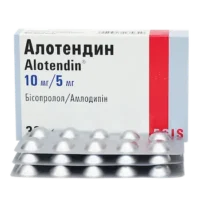Description
Platogril (Clopidogrel) Coated Tablets 75 mg. №84
Ingredients
- Active ingredient: Clopidogrel bisulfate 75 mg.
- Other ingredients: Microcrystalline cellulose, lactose monohydrate, hydroxypropyl cellulose, croscarmellose sodium, magnesium stearate, hypromellose, titanium dioxide, talc, polyethylene glycol.
Dosage
Recommended dosage: One tablet daily, or as directed by a healthcare professional. Swallow the tablet whole with water, with or without food.
Indications
Platogril (Clopidogrel) coated tablets 75 mg. №84 are indicated for the prevention of blood clots in patients with a history of recent heart attack, stroke, or peripheral arterial disease.
Contraindications
Do not use Platogril (Clopidogrel) coated tablets 75 mg. №84 if you:
- Are allergic to clopidogrel or any other ingredients in the tablets.
- Have an active bleeding disorder.
- Are pregnant or breastfeeding without consulting a doctor.
Directions
Take Platogril (Clopidogrel) coated tablets 75 mg. №84 exactly as prescribed by your healthcare provider. Do not change the dosage or stop taking the medication without medical advice.
Scientific Evidence
Clopidogrel, the active ingredient in Platogril tablets, is a platelet aggregation inhibitor that works by irreversibly binding to the P2Y12 ADP receptor on platelets, preventing platelet activation and aggregation. Clinical trials have shown that clopidogrel is effective in reducing the risk of cardiovascular events in high-risk patients.
Additional Information
It is important to inform your healthcare provider about all medications, supplements, and medical conditions before starting Platogril (Clopidogrel) therapy. Regular monitoring of platelet function may be necessary during treatment to ensure the desired antiplatelet effect.
- Clopidogrel has been extensively studied in various clinical trials, including the CAPRIE study, which compared clopidogrel to aspirin in patients with atherosclerotic vascular disease. The study demonstrated that clopidogrel was more effective than aspirin in reducing the risk of major cardiovascular events.
- Overall, Platogril (Clopidogrel) coated tablets 75 mg. №84 are a well-established and effective treatment option for patients at risk of thrombotic events.





